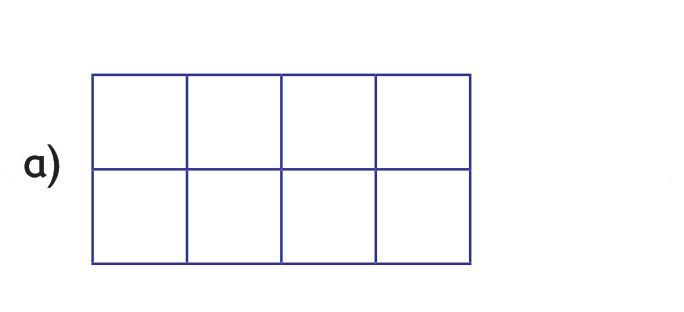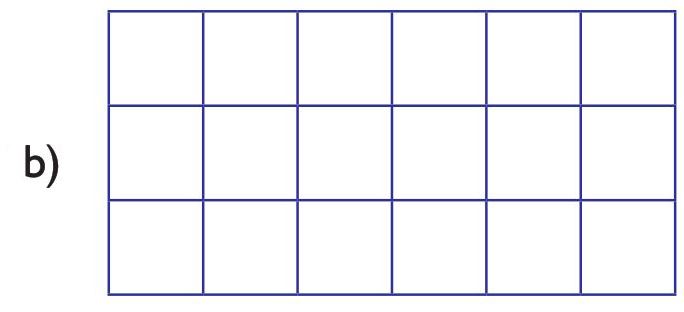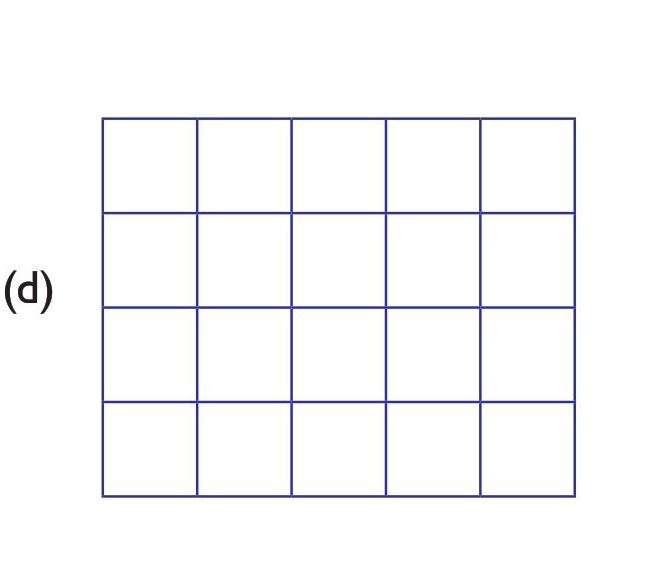Print the worksheet for group activities (actual size).
Area of a rectangle
In pairs:
- Cut out the rectangle on the worksheet.
- Cover the rectangle using one centimetre squares.
- Count the number of the one centimetre squares used to cover the rectangle.
squares - Count the number of one centimetre squares along the length (columns).
squares - Count the number of one centimetre squares along the width (rows).
squares - Multiply the number of columns by the number of rows.
The product is . - Compare the total number of squares counted with the product of number of columns and number of rows.
- Discuss in your group and share with other groups.
Note
The number of one centimetre squares counted is equal to the product of number of columns and number of rows.
Area of the rectangle = Number of columns × Number of rows
Example 2
Find the area of the rectangle shown below.
Number of columns is 6.
Number of rows is 4.
Area of the rectangle = number of columns × number of rows = 6 × 4 square centimetres = 24 cm2
Exercise D
Area of a square
In pairs:
- Cut out the square on the worksheet.
- Cover the square fully with one centimetre square.
- Count the number of one centimetre squares used to cover the square.
squares - Count the number of one centimetre squares along the length (number of columns).
squares
Count the number of one centimetre squares along the width (number of rows).
squares - Multiply the number of columns by the number of rows.
The product is - Compare the total number of one centimetre squares counted with the product of number of columns and number of rows.
- Discuss in your group and share with other groups.
Note
Total number of one centimetre squares counted is equal to the product of number of columns and number of rows.
Area of a square = Number of columns × Number of rows
Example 3
Find the area of the square shown:
Number of columns is 6.
Number of rows is 6.
Area of the square is 6 × 6 = 36 cm2.



